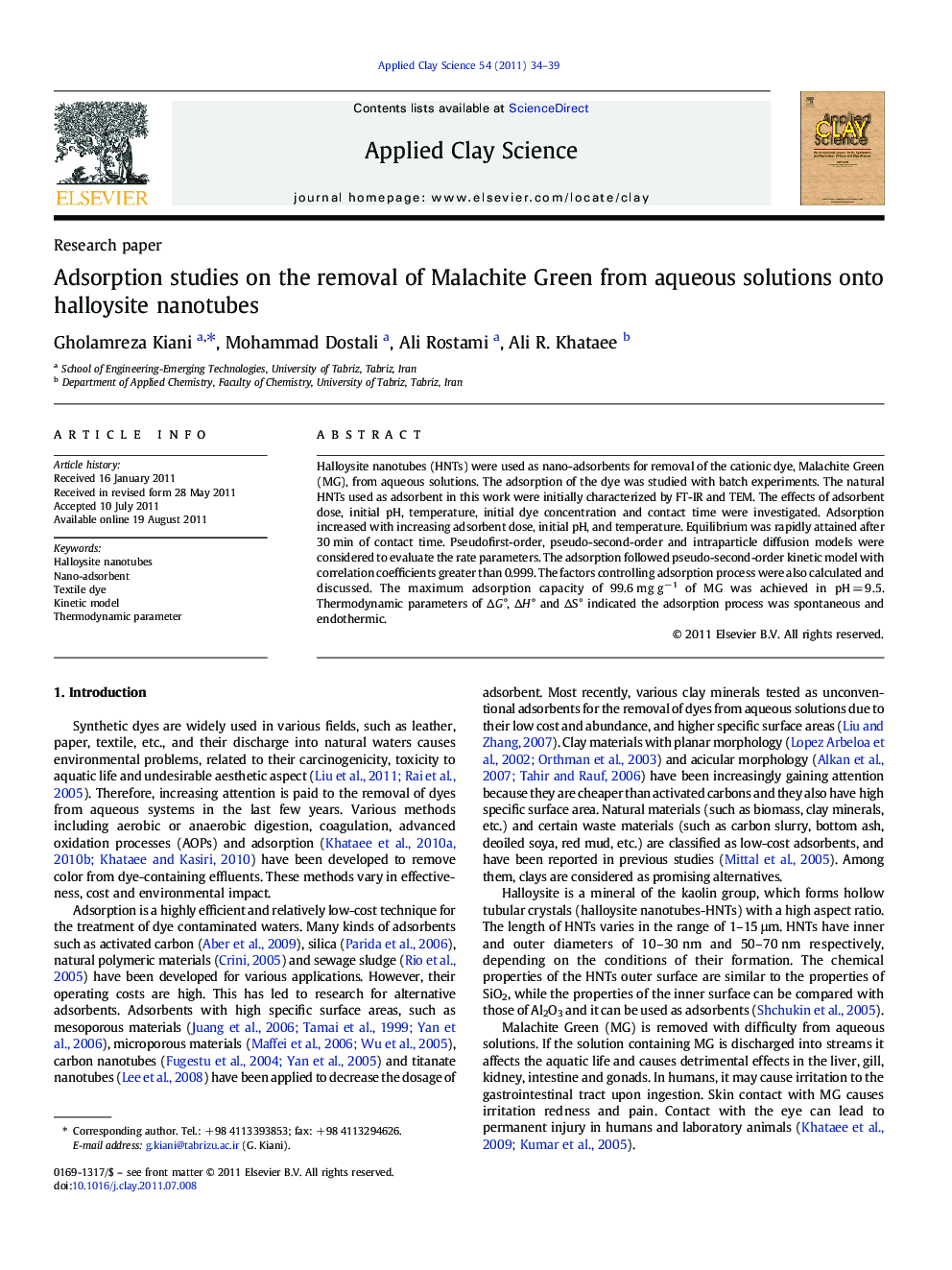| Article ID | Journal | Published Year | Pages | File Type |
|---|---|---|---|---|
| 1695571 | Applied Clay Science | 2011 | 6 Pages |
Halloysite nanotubes (HNTs) were used as nano-adsorbents for removal of the cationic dye, Malachite Green (MG), from aqueous solutions. The adsorption of the dye was studied with batch experiments. The natural HNTs used as adsorbent in this work were initially characterized by FT-IR and TEM. The effects of adsorbent dose, initial pH, temperature, initial dye concentration and contact time were investigated. Adsorption increased with increasing adsorbent dose, initial pH, and temperature. Equilibrium was rapidly attained after 30 min of contact time. Pseudofirst-order, pseudo-second-order and intraparticle diffusion models were considered to evaluate the rate parameters. The adsorption followed pseudo-second-order kinetic model with correlation coefficients greater than 0.999. The factors controlling adsorption process were also calculated and discussed. The maximum adsorption capacity of 99.6 mg g−1 of MG was achieved in pH = 9.5. Thermodynamic parameters of ΔG°, ΔH° and ΔS° indicated the adsorption process was spontaneous and endothermic.
► HNTs as nano-adsorbents for removal of Malachite Green from aqueous solutions. ► The maximum adsorption capacity of 99.6 mg g−1 of MG in pH = 9.5. ► The aggregated MG on halloysite nanotubes deposited completely within 30 min. ► Halloysite nanotubes as low-cost nano-adsorbent for the removal of dyes.
